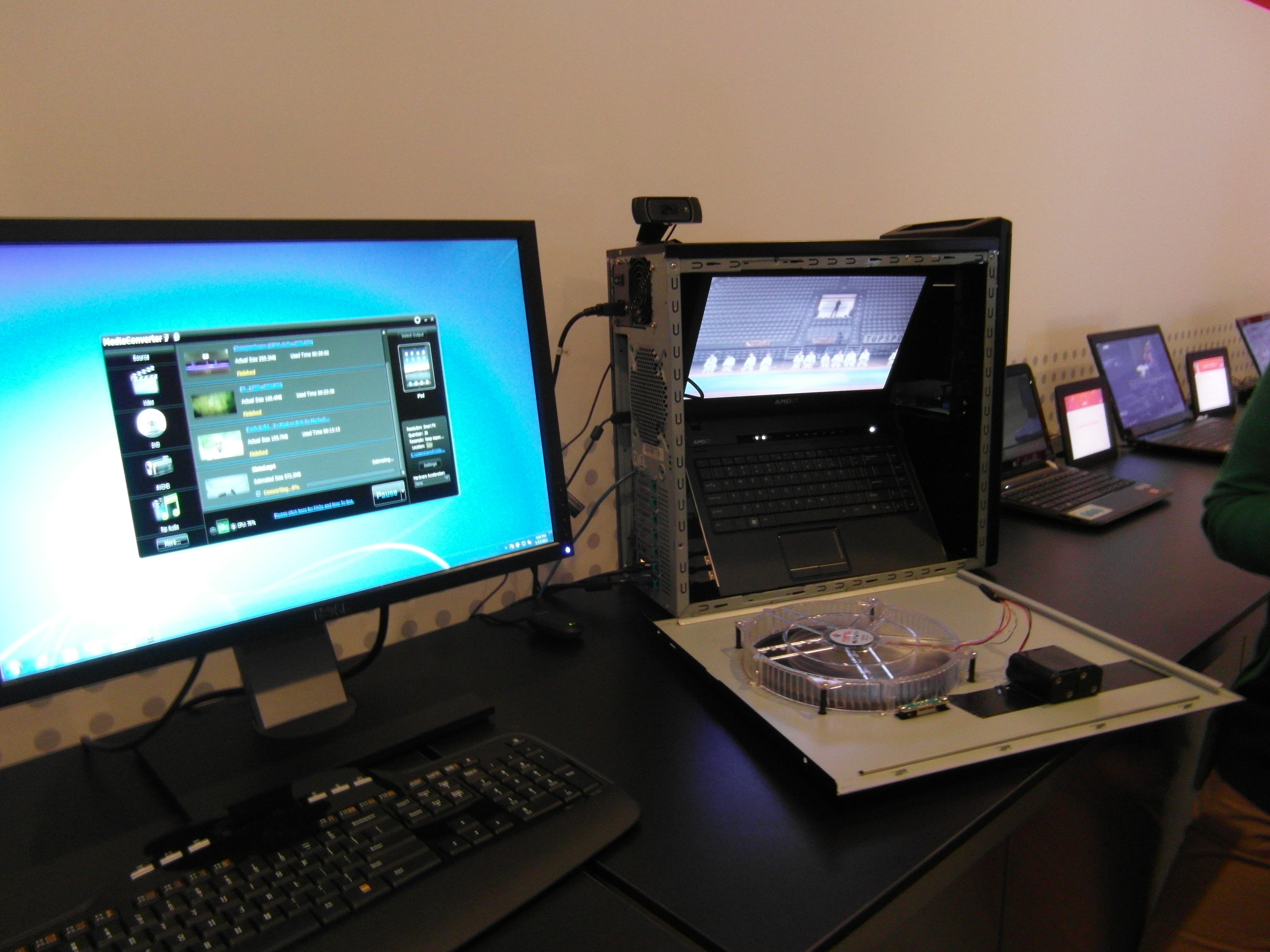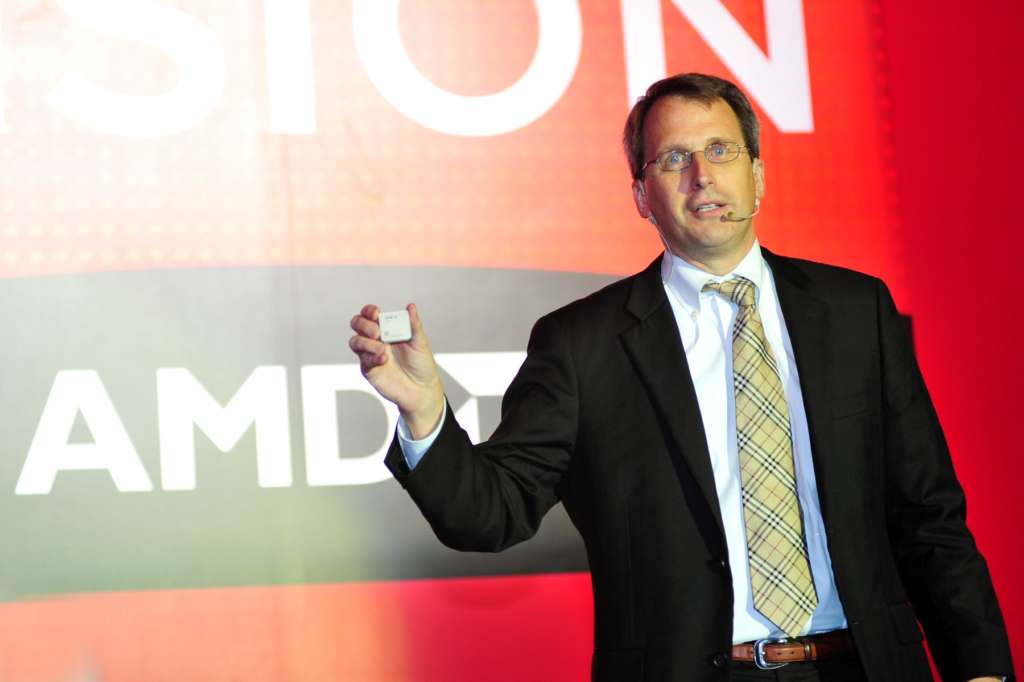AMD previews Trinity APU for ultraportables
Next-generation CPU/GPU for notebooks and tablets

If Intel is right about the high percentage of new PCs bought that will be Ultrabooks – and the $300 million it's putting behind the Ultrabook concept should help with that – AMD needs a processor to put in budget thin and light notebooks as well.
That's what the next-generation Trinity APU is designed for. We were first shown the chip at Computex 2011, but AMD showed us it running in a back room at CES 2012.
At first it looked like AMD was demonstrating a beefy desktop processor in a large gaming rig, playing a DirectX 11 game on one screen and transcoding video for iPad resolution on another.
But then AMD's Ron Myers cracked open the case to show the notebook that was actually doing the work, which was also playing HD video on its own screen.
Yes, Dirt3 was running in low detail rather than high and the media transcoding was using CPU rather than GPU, but the texture mapping in DirectX 11 made even low detail pretty impressive and all three tasks were running smoothly without any stuttering or glitching.
Despite being tucked inside a PC case, the notebook showed no signs of overheating (although the large fan on the case is probably responsible for that).
That's because AMD has halved the amount of power that Trinity requires compared to the current Llano APU, from 35W to 17W.
Sign up for breaking news, reviews, opinion, top tech deals, and more.
As well as a part designed for laptops (and a high-powered desktop chip), Trinity will also be available as a socket-less processor that will fit into ultra-thin notebooks (which is what AMD has to call Ultrabooks made with its chips, since Intel has copyright on the Ultrabook term) and Windows 8 tablets.
AMD is also promising a 25% improvement in compute performance from the Piledriver CPU that replaces Bulldozer and a 50% improvement from the GPU in Trinity.

TRINITY 2012: We first saw Trinity at last year's Computex
With Intel adding DirectX 11 support in Ivy Bridge, AMD will lose some of the GPU advantage it's had with Llano, so it needs that extra 50%. Of course, we don't know how good DirectX 11 on Ultrabooks will be.
Intel's Mooley Eden refused to put a specific number on the improved performance but promised it would be "a different experience" during CES.
What AMD should still have is lower prices, especially as Trinity ultra-thin systems won't have to have the expensive materials that Intel insists on for Ultrabooks. When Trinity comes out in Q2 this year, notebooks using it are likely to cost $500 or less – half the price Intel's partners are struggling to keep Ultrabooks down to.
With the lower TDP, Trinity should also improve on the already-good battery life of Llano. For comparison, the Llano-powered HP dm1 AMD had running in the corner of the meeting room was managing six hours of video playback. "That's true all-day battery life," Myers pointed out.
Mary (Twitter, Google+, website) started her career at Future Publishing, saw the AOL meltdown first hand the first time around when she ran the AOL UK computing channel, and she's been a freelance tech writer for over a decade. She's used every version of Windows and Office released, and every smartphone too, but she's still looking for the perfect tablet. Yes, she really does have USB earrings.